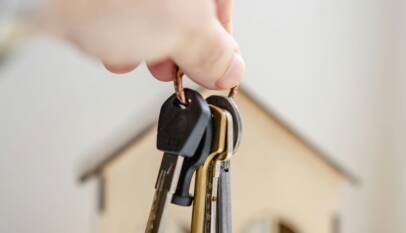What Is a Vehicle Inspection? What to Expect During a Check-Up
A vehicle inspection is a comprehensive evaluation of a vehicle (car, truck, etc.) to check for safety, operation, and compliance with local laws. Inspections can be done for the sake of routine maintenance, as an added precaution prior to purchasing a vehicle, or to meet environmental or emissions laws where you live. In metropolitan areas, such as Lake St. Louis, there are reputable service and repair centers focused on vehicles that will perform the inspection and complete repairs that are necessary to meet legal and customer expectations.
Why Vehicle Inspections Matter
- Inspections help improve road safety by identifying issues before they lead to more dangerous problems.
- Saves potential repair costs by identifying these problems early, from worn brakes to leaking fluids.
- Reduces the air we pollute and ensures we follow our local laws by meeting inspection requirements.
If you are purchasing a used car, a pre-purchase vehicle inspection will bring to light any hidden defects or problems, saving you trouble down the road.
What To Expect: The Check-Up Process
The process for a professional vehicle inspection is comprehensive. A vehicle inspection checklist is utilized, and a detailed process is being utilized, of which the inspection covers every part of the vehicle, including the exterior body and the engine internals.
Exterior and Body Inspection
Mechanics check for major and minor damage: they note any dents, scratches, and rust.
They examine the glass (windshields, mirrors) for chips or cracks that will affect vision.
Headlights, taillights, turn signals, and hazard lights all must work; cracks in the covers or burned-out bulbs are flagged for repair.
Tires and Wheels
- The grip and safety of the vehicle are ensured through tire tread depth and condition, and improperly inflated tires can affect both efficiency and control.
- Wheel alignment is checked in order to prevent uneven wear of the tires.
- The spare tire and jack are generally checked as well.
Brakes and Suspension
- A brake test checks for worn pads, damaged rotors, or leaks in the hydraulic system (which are all important for stopping power).
- Steering and suspension components are checked for looseness, wear, and vibration as they pertain to handling safety.
Under the Hood
- A brake test checks for worn pads, damaged rotors, or leaks in the hydraulic system (which are all important for stopping power).
- Steering and suspension components are checked for looseness, wear, and vibration as they pertain to handling safety.
Interior Components
- Seatbelts and airbags are tested to verify everything works properly, including all of the safety features.
- The warning lights, the horn, and the climate controls on the dashboard are also checked.
Emissions and Environmental Compliance
In the state of Missouri and other states, vehicles must meet emissions inspection requirements to be legally used.
The exhaust system is inspected for leaks, excessive noise, and any signs of tampering, and devices like the catalytic converter are checked.
Pre-Purchase Vehicle Inspection
If you are purchasing a used vehicle in Lake St. Louis, then obtaining a pre-purchase vehicle inspection from a qualified automotive repair technician is crucial. The mechanic will carefully assess the vehicle to uncover either significant or minor repairs that the current owner or an unscrupulous seller may attempt to conceal. If there are any safety concerns, you may reconsider your purchase based on the report. Many potential buyers will undertake an inspection and rely on the report as a large factor in their decision-making process for purchasing or denying purchasing the used vehicle they may be interested in.
The Complete Vehicle Inspection Checklist
Typical checklist items include:
- Engine, oil, and fluids
- Battery and electrical system
- Brake system and components
- Tires, wheels, and suspension
- All exterior lights, mirrors, and windows
- Exhaust and emissions system
- Windshield and wipers
- Safety features: airbags and seatbelts
- Steering performance
- Horn, signals, and dashboard features
Emissions Inspection Requirements
Testing is required because of state regulations, periodic or yearly emissions. For vehicles that have emissions failures, repairs must be completed in order to renew the registration.
Conclusion: Peace of Mind and Safety
A vehicle inspection (whether due to routine upkeep, sale, or general ownership) is a safeguard for both the driver and passengers. Automotive repair Lake St. Louis, for example, will use stringent checklists at their inspection sites to help keep local drivers safe and legal on the road. Think about getting into a routine where inspections are done annually, or at least before major purchases, while always being aware of the most up-to-date local requirements for emissions inspections to avoid compliance headaches.
Reputable inspection sites will give you thorough reports, honest recommendations, and peace of mind, making it safer (and more enjoyable) for everyone in and around the vehicle.
The Rise of AI in Beauty E-Commerce: A New Era of Smart Skincare
As more and more customers expect tailored items, beauty e-commerce is going through a hug…







